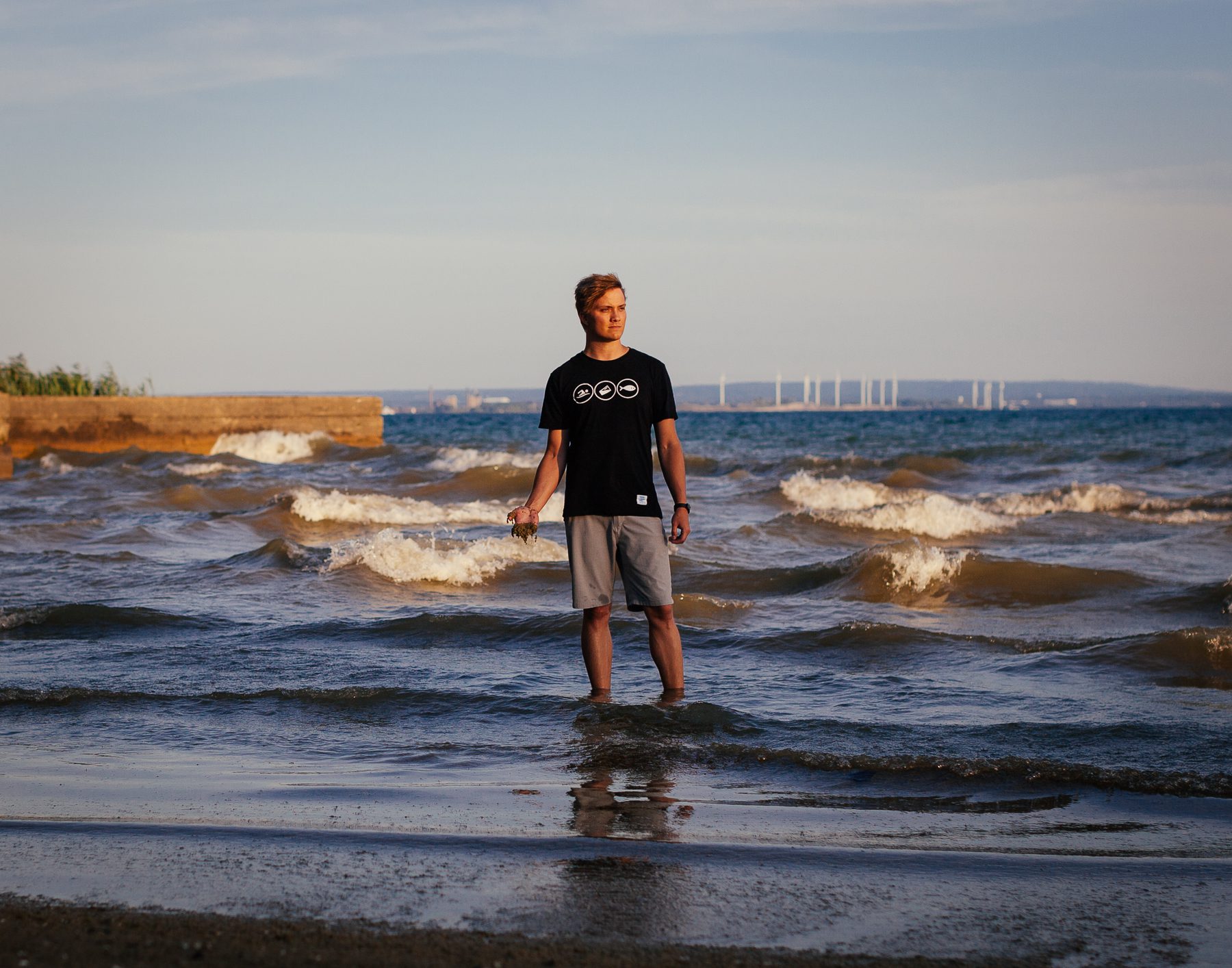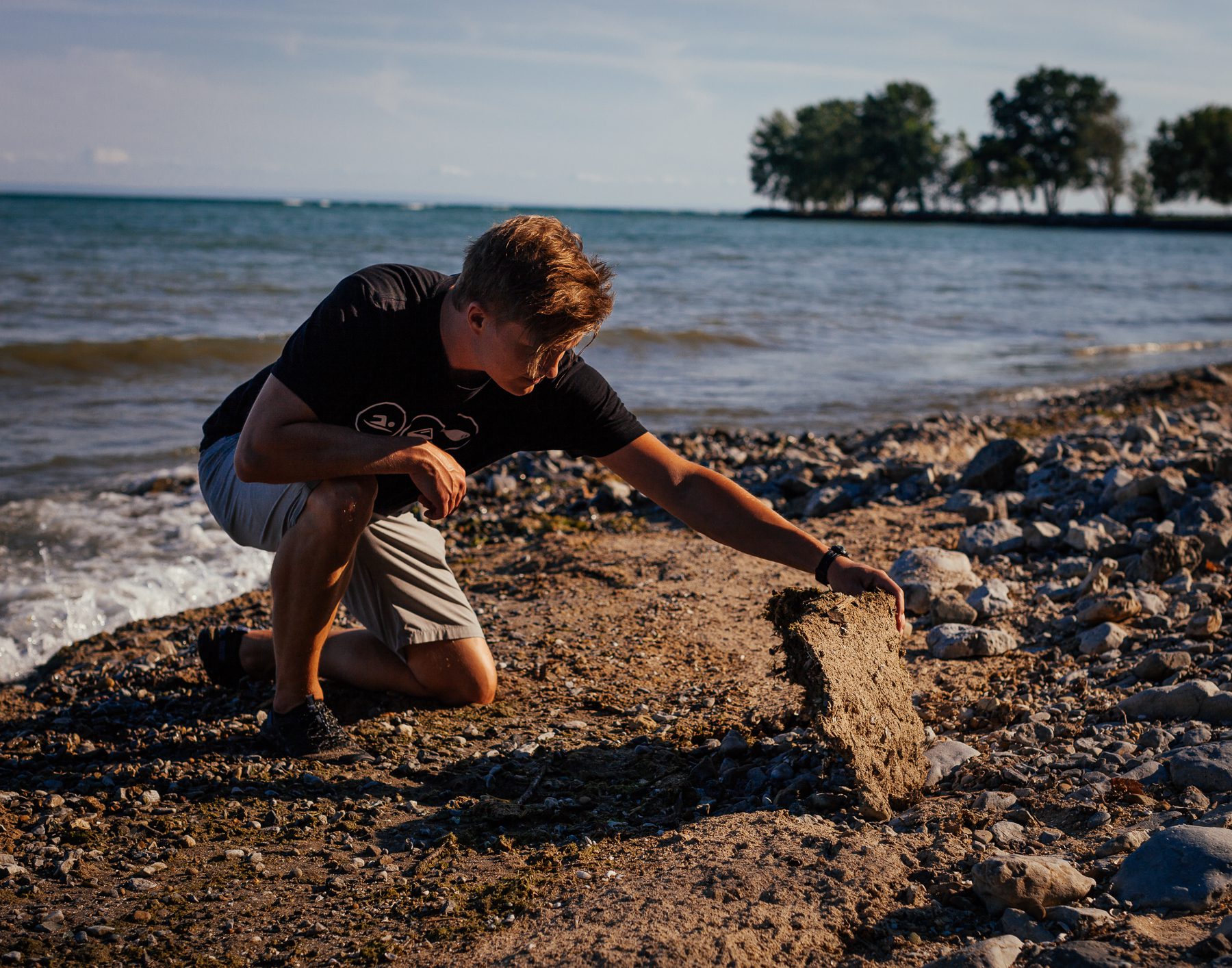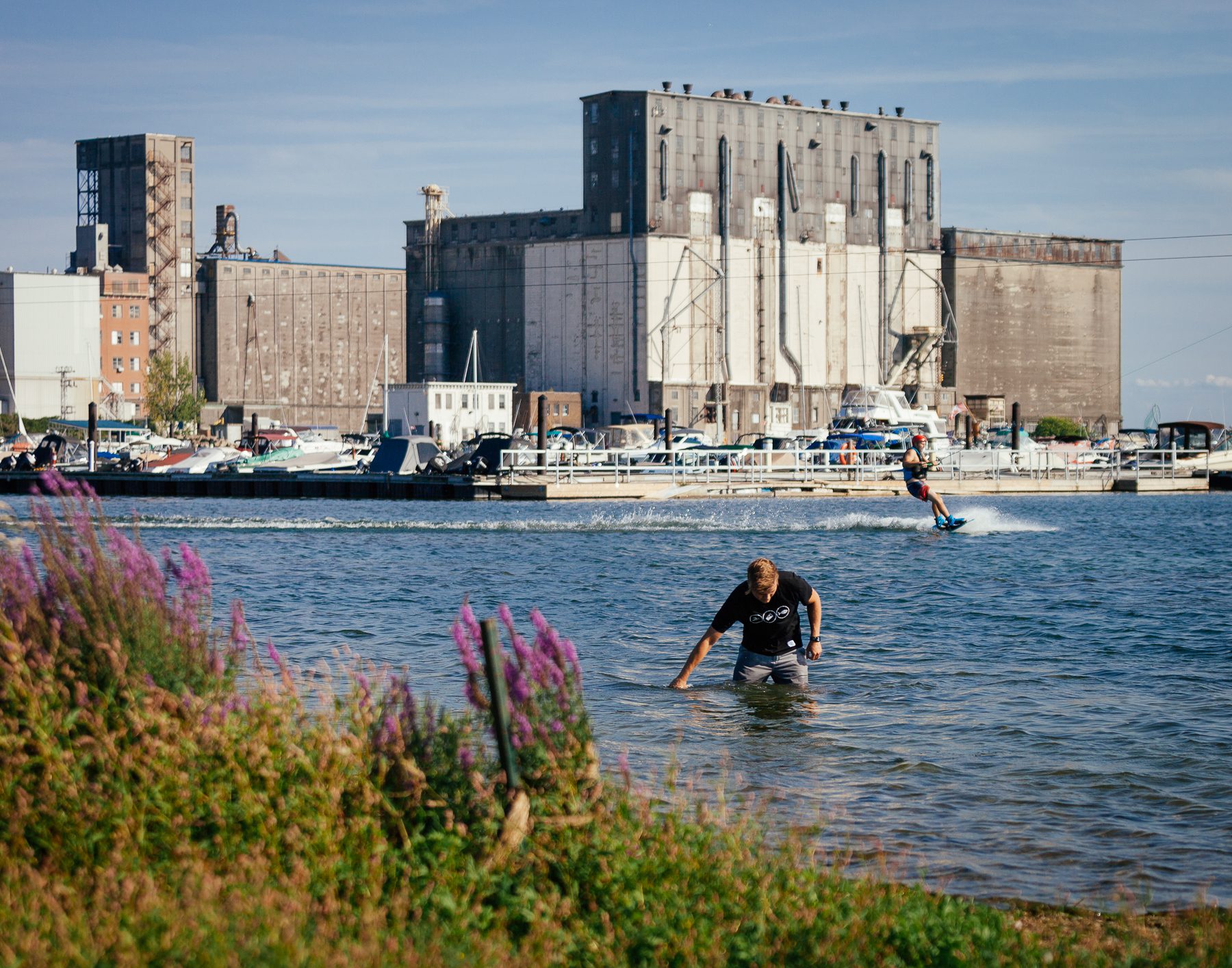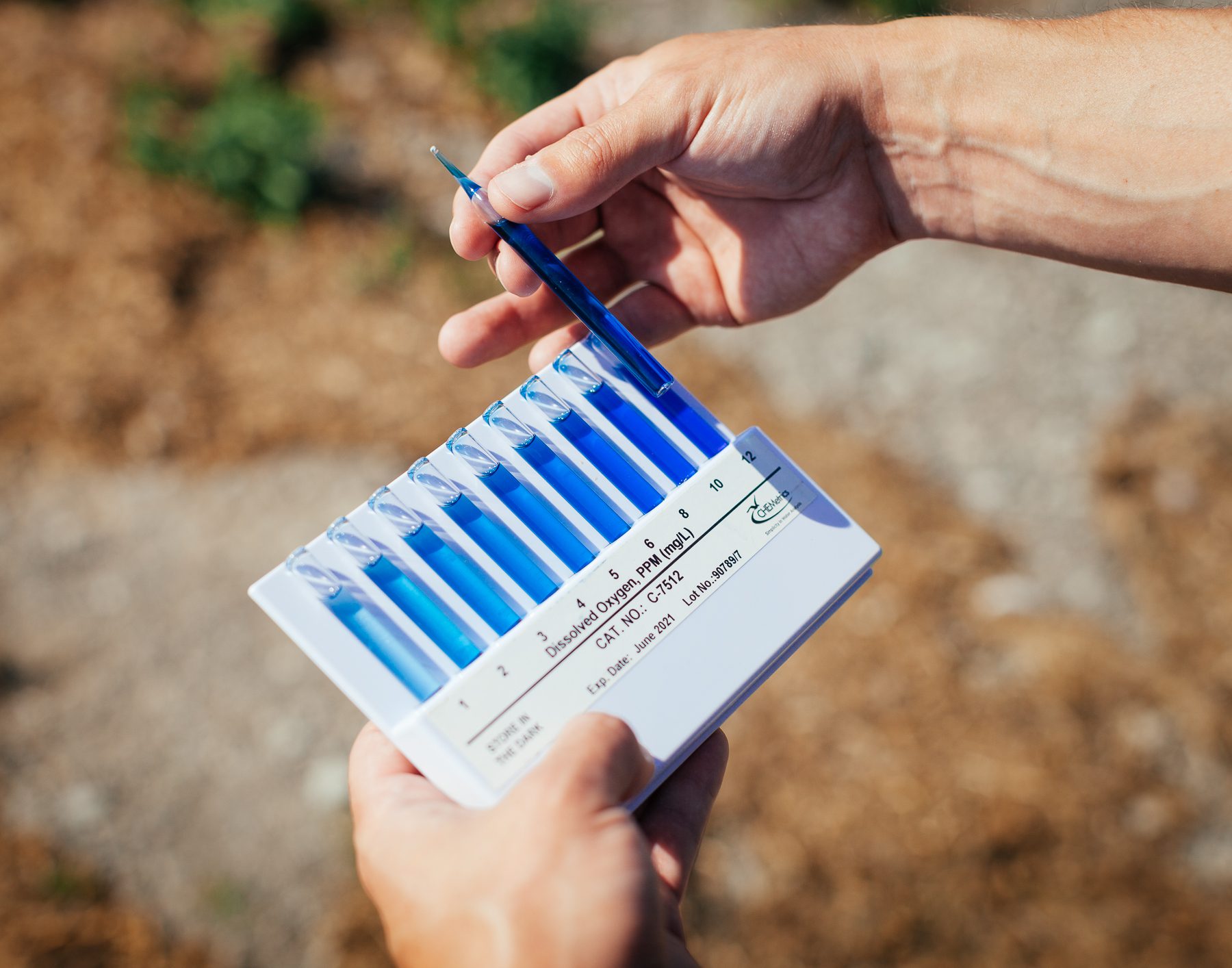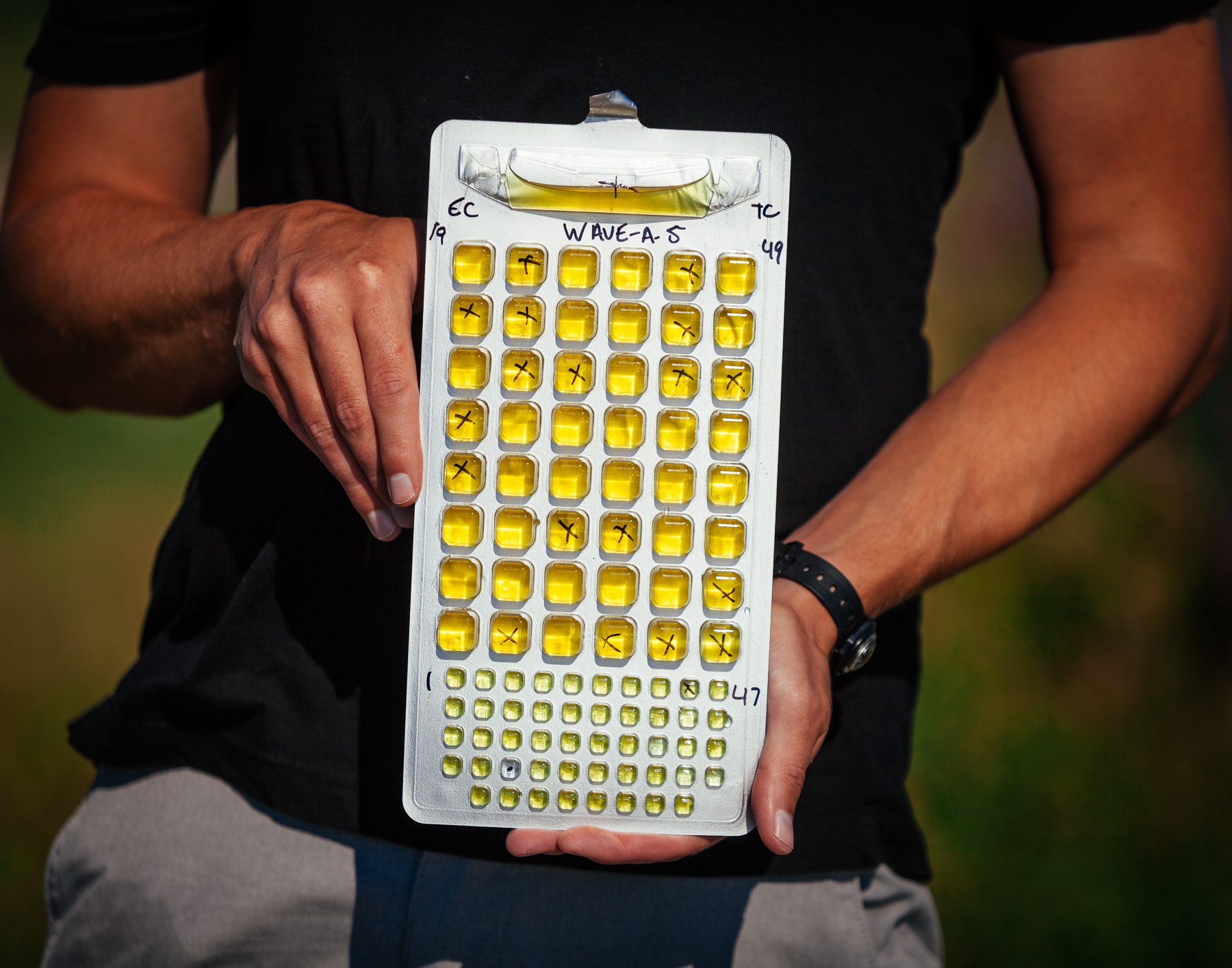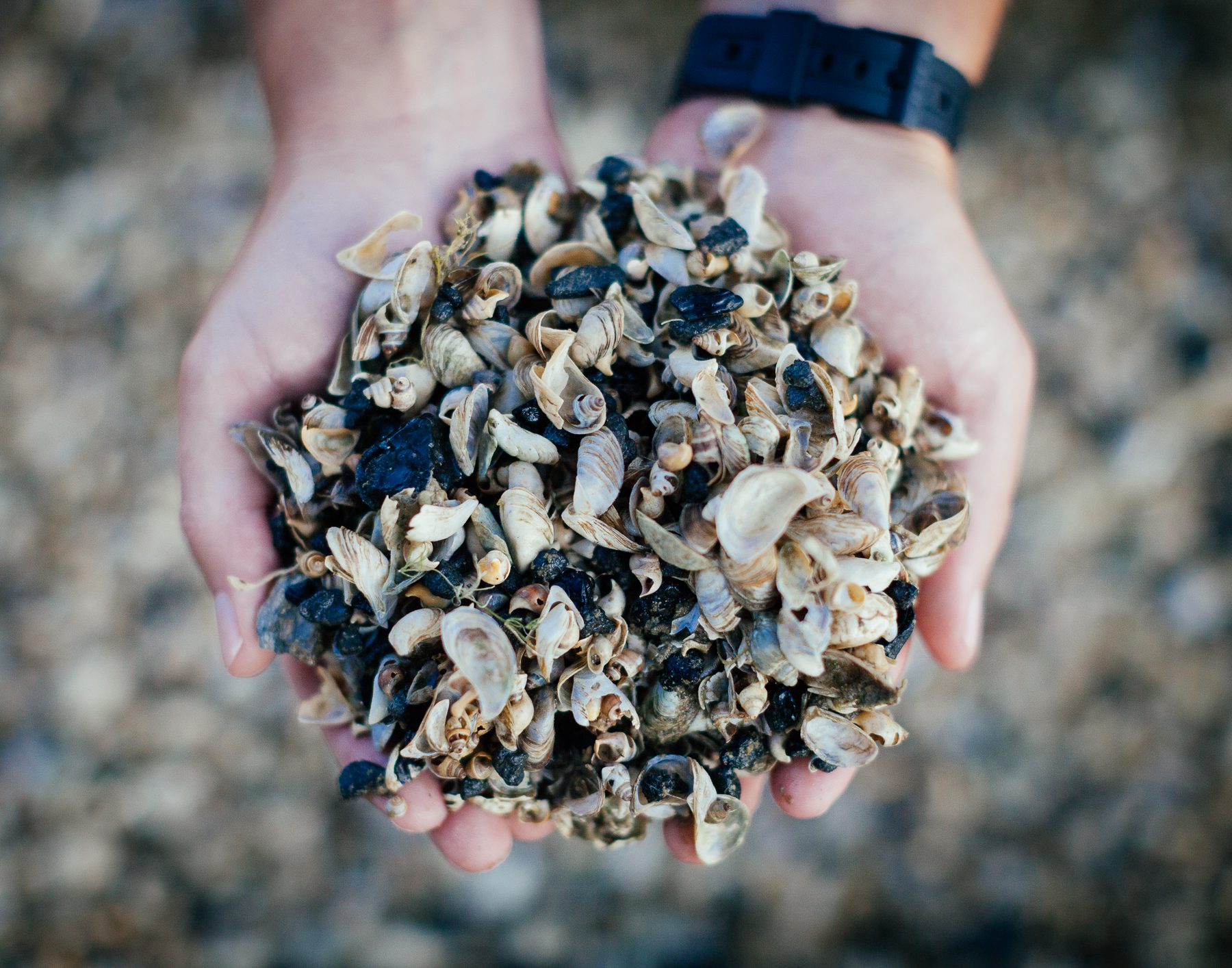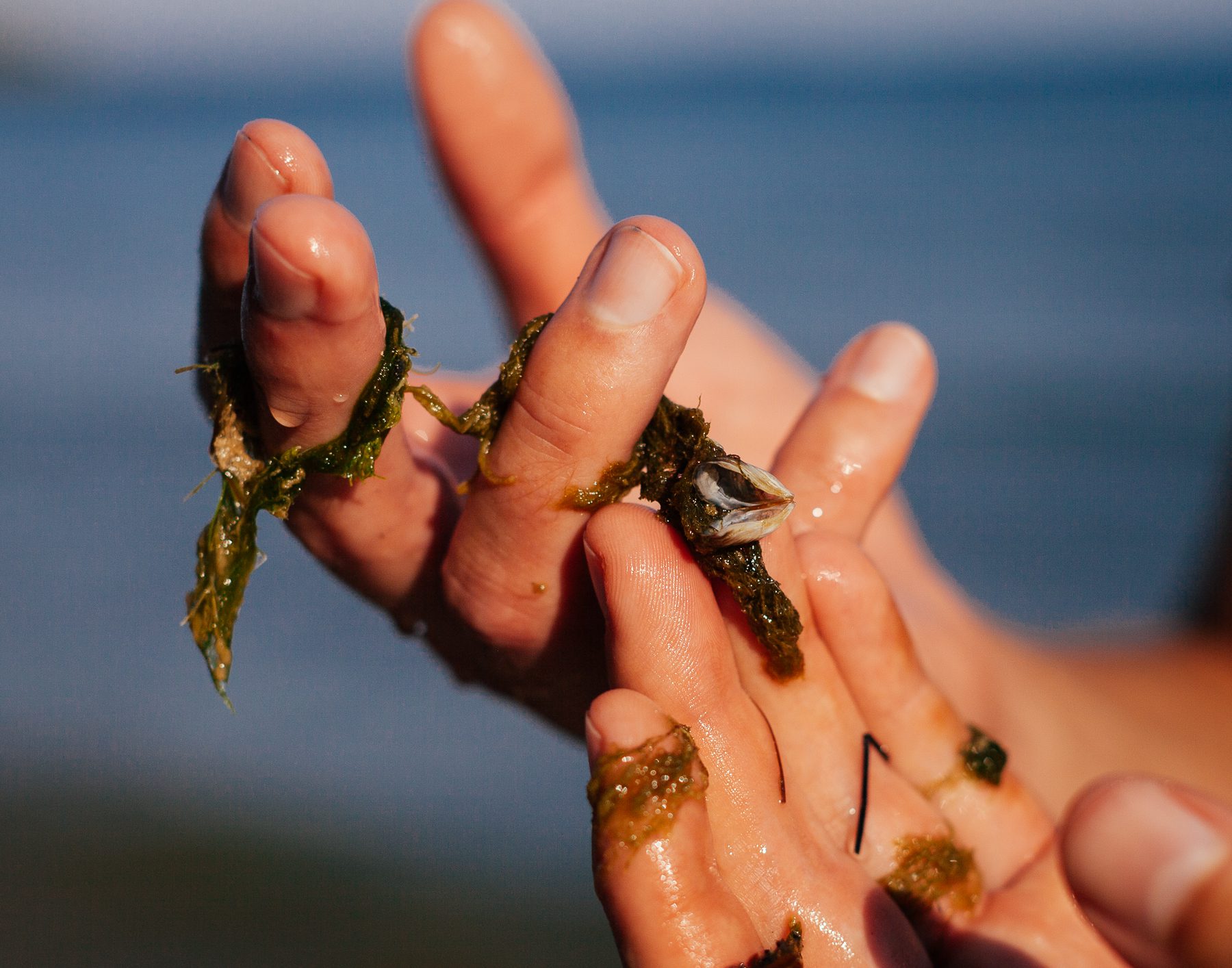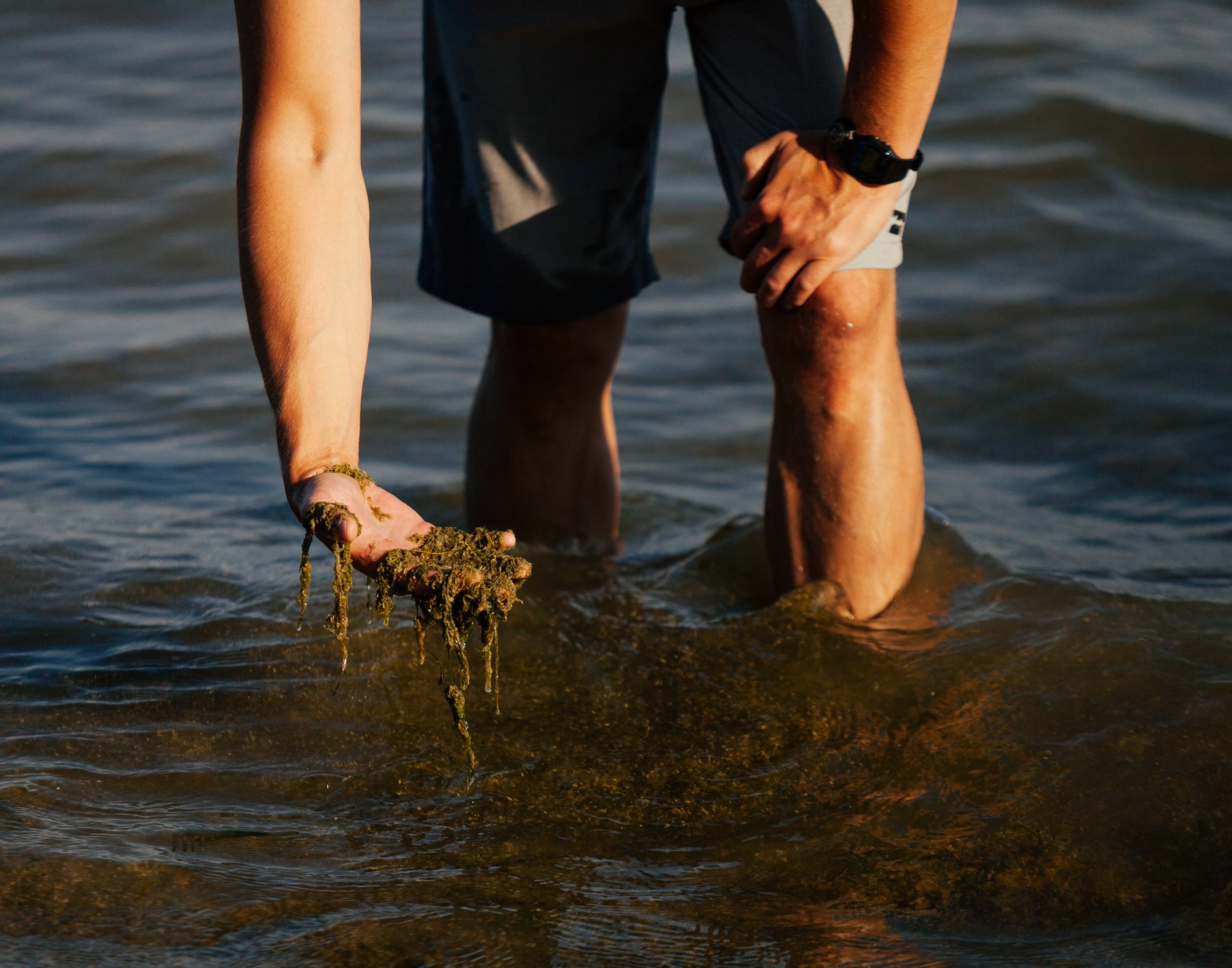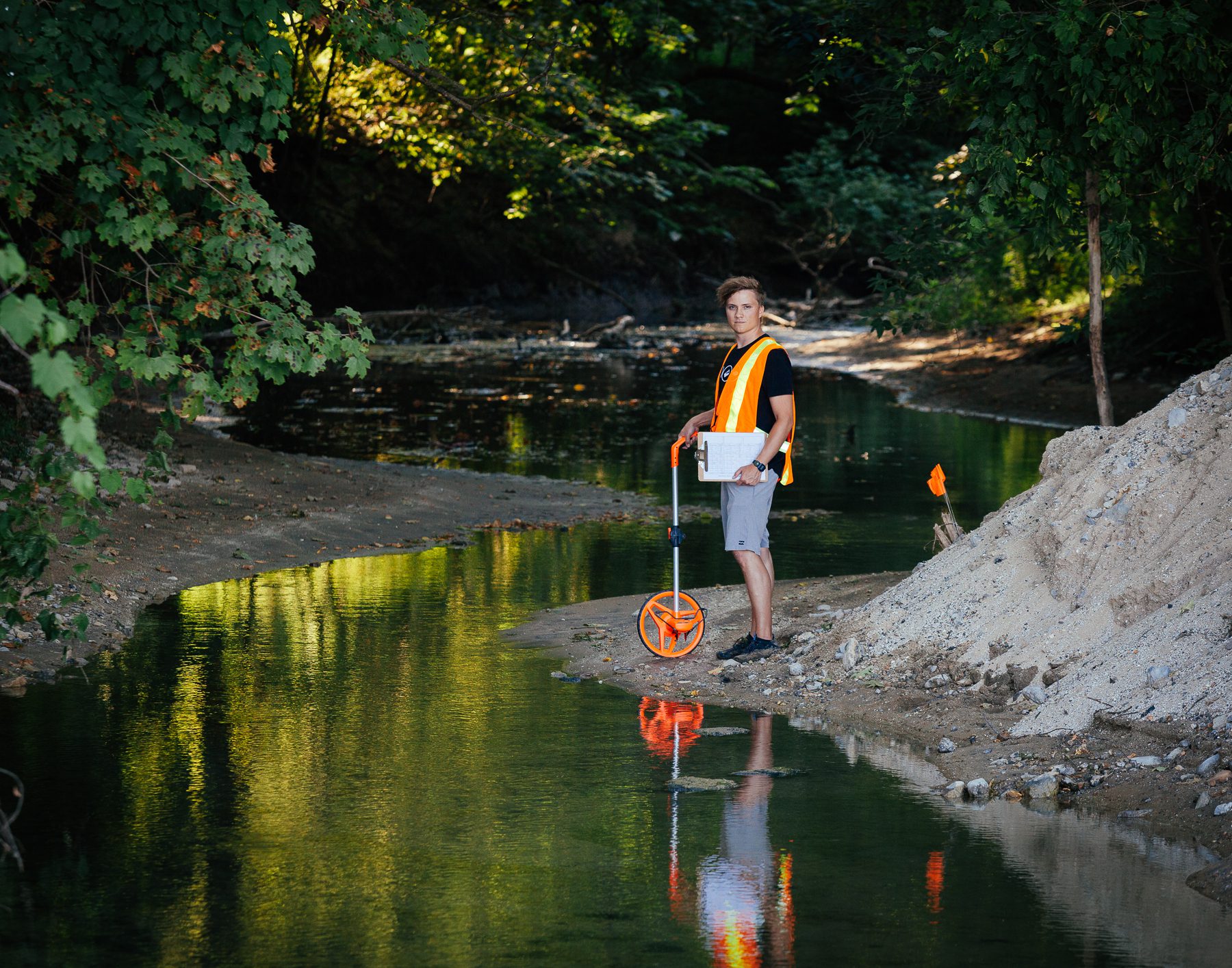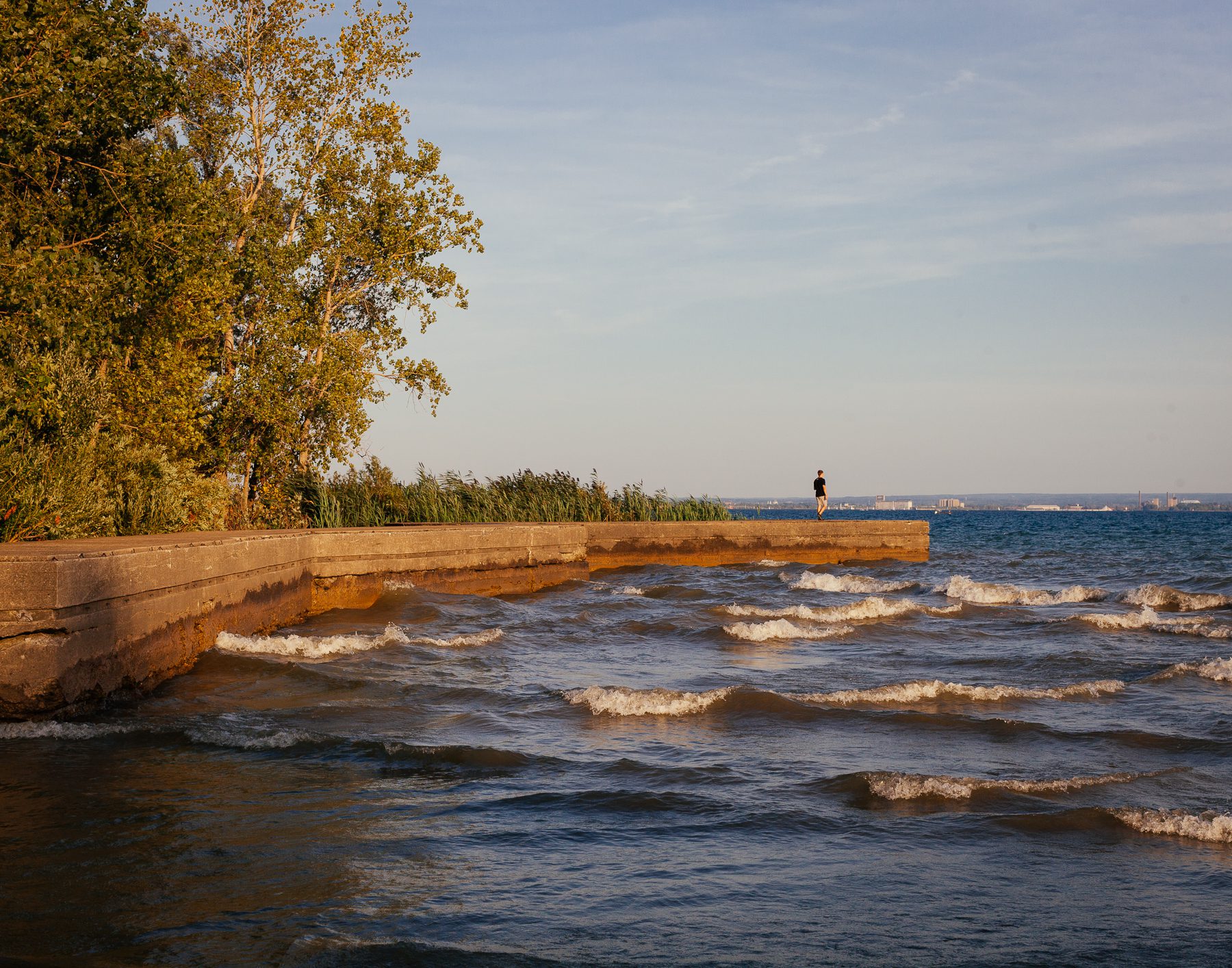While camping and swimming his childhood summers away, Gregary had no idea about the environmental issues facing these incredible bodies of water or that he would dedicate his life to the preservation of these lakes.
A deep connection to these lakes has been a constant in Gregary’s life. In 2011, the same year Gregary planned on going to university, Lake Erie experienced a massive toxic algae bloom.
Gregary wanted to learn more about how to mitigate this dire situation. Hence, as an architecture student at the University of Guelph, Gregary focused his studies on how low-impact development techniques could improve water quality in the Great Lakes.


